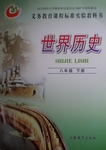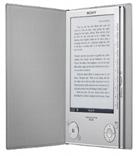题目内容
Charging your mobile phone might soon be as simple as taking a walk around the block. Scientists have created a new machine that harvest energy from the movement of the knees while walking. Six volunteers wore the devices(装置)on their legs while walking on a treadmill(跑步机)and were able to produce about five watts of electrical power each. That’s enough energy to run 10 mobiles at the same time.
“Since muscles are the powerhouses of the body, my colleagues and I designed our device to generate electricity from the move of the knee joint,” said Max Donelan. “It resembles a knee brace and weighs about 1.5 kilograms including the gearing(传动装置)and generator.”
The apparatus(装置)catches the energy of a person’s movement by connecting an electrical generator to knee moving. When the wearer extends the knee, a gear on the device turns and spins the generator, which builds up energy. When the knee is flexed, the device turns off so as not to tax the wearer. The machine senses moving and knows when to activate itself.
The design allows a person to use the tool without using much additional energy beyond the normal demands of walking. The researchers measured the volunteers’ oxygen intake and carbon-dioxide output to make sure it wasn’t strenuous to use.
People are an excellent source of portable power. An average-sized person stores as much energy in fat as a 1,000-kilogram battery. People recharge their body batteries with food.
The device could be used to power computers in remote areas where electricity is short. The early markets are people whose lives depend on portable power, such as people with artificial limbs (肢体). On the military side, some soldiers have an extreme dependence on batteries these days, so both these groups could benefit.
1.The text is mainly about a new machine that .
A.can make your walking easy on a treadmill
B.can generate enough electricity by walking
C.can increase the strength of your walking
D.can offer electricity for your physical practice
2.According to the text, which parts of the body are suitable for the device?
A.The knees. B.The ankles. C.The wrists. D.The neck.
3.It can be inferred from the text that the amount of electricity from the device directly lies in .
A.the speed of your walking B.the amount of food you eat
C.the amount of oxygen intake D.the extent of your knees extending
4.Why did the researchers measure the volunteers’ carbon-dioxide output?
A.To see whether the device is hard to use.
B.To test the amount of electricity generated.
C.To tell whether the device has enough source of energy.
D.To judge what food is useful for the wearers.
5.We can learn from the text that the device .
A.is a must for a soldier in the army
B.will more and more change people’s ways of life
C.has widely been used in remote areas
D.is more useful in places with electricity unaccessible
BADAD

 探究与巩固河南科学技术出版社系列答案
探究与巩固河南科学技术出版社系列答案 For many of us, printed books are satisfying in ways beyond the words they contain. Billions of printed books have been published, read and saved in the 600 years since movable type was invented, so why mess with a good things?
For many of us, printed books are satisfying in ways beyond the words they contain. Billions of printed books have been published, read and saved in the 600 years since movable type was invented, so why mess with a good things?

 For many of us, printed books are
satisfying in ways beyond the words they contain. Billions of printed books
have been published, read and saved in the 600 years since movable type was
invented, so why mess with a good things?
For many of us, printed books are
satisfying in ways beyond the words they contain. Billions of printed books
have been published, read and saved in the 600 years since movable type was
invented, so why mess with a good things? For many of us, printed books are satisfying in ways beyond the words they contain. Billions of printed books have been published, read and saved in the 600 years since movable type was invented, so why mess with a good things?
For many of us, printed books are satisfying in ways beyond the words they contain. Billions of printed books have been published, read and saved in the 600 years since movable type was invented, so why mess with a good things?